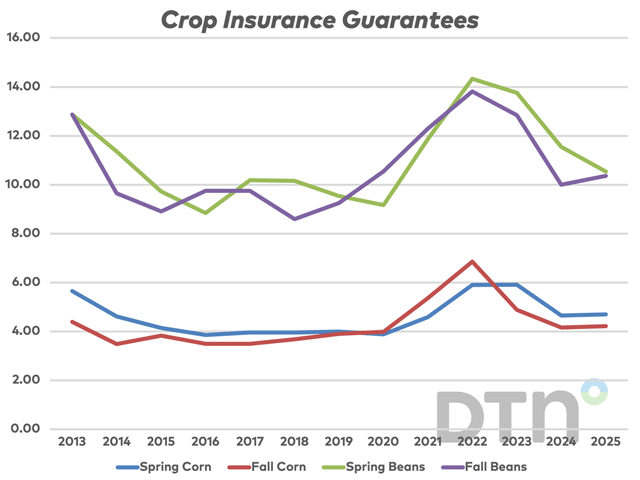DTN Oil
WTI Falls to 6-Week Low
WASHINGTON (DTN) -- Oil futures nearest delivery on the New York Mercantile Exchange and Brent crude traded on the Intercontinental Exchange deepened losses in afternoon trade Thursday, with U.S. crude benchmark falling below $105 per barrel (bbl) as a strengthening U.S. dollar and restocking of U.S. crude oil inventories that increased for the third consecutive week through June 17, according to American Petroleum Institute added to recession concerns.
Traders leaned on API data released late Wednesday showing a surprise 5.6 million bbl build occurred in domestic crude oil inventories last week after the U.S. Energy Information Administration said its Weekly Petroleum Status Report, among other petroleum reports, would be delayed until next week the earliest because of technical issues.
Building inventory likely signals slowing fuel demand as high gasoline prices prompt consumers to drive less while a slowing economy tilting closer to recession saps demand for diesel fuel. API reported gasoline inventories in the United States increased 1.216 million bbl last week compared with calls for a draw of 800,000 bbl, while distillate inventories fell 1.656 million bbl, missing an expected 300,000 bbl week-on-week increase.
Federal Reserve Chairman Jerome Powell told U.S. lawmakers Thursday that the central bank is not trying to deliberately induce a recession to bring inflation under control, although he noted that aggressive interest rates hikes will likely slow the economy and lift unemployment.
P[L1] D[0x0] M[300x250] OOP[F] ADUNIT[] T[]
"There is a risk that unemployment will move up, from what is an historically low level though," Powell said during a hearing before the House Financial Services Committee.
The national unemployment rate stood near a 50-year low at 3.6% in May, down from nearly 15% in April 2020 when the country locked down amid the COVID-19 pandemic. Last week, Fed officials projected the unemployment rate would rise to 3.9% by the end of 2023 and 4.1% at the end of 2024.
U.S. employment remains strong, although weekly first-time unemployment claims have trended higher during the second half of the second quarter. The health of the U.S. labor market closely correlates with gasoline demand, and the strong labor market, along with ongoing pent-up demand following pandemic restrictions, were evident in AAA projections calling for record road travel for the upcoming July 4 holiday at 42 million people despite retail gasoline prices averaging just below $5 gallon.
Globally, data out of the Eurozone showed the manufacturing sector there edging near recession in early June, with business activity contracting at the sharpest rate since the height of the global financial crisis in November 2008. Both the stagnation of demand and worsening outlook were widely blamed for the rising cost of living, tighter financial conditions and concerns over energy and supply chains that are linked to the war in Ukraine and ongoing pandemic disruptions.
"Eurozone economic growth is showing signs of faltering as the tailwind of pent-up demand from the pandemic is already fading, having been offset by the cost-of-living shock and slumping business and consumer confidence," commented Chris Williamson, chief business economist with S&P Global Market Intelligence, on the flash PMI data.
Germany, EU's largest economy, warned of a collapse in its energy markets Thursday amid a worsening natural gas shortage after Russia throttled its supply over the Ukraine war, with Germany lifting the emergency level to the "alarm" stage, the second highest in its plan. German Economy Minister Robert Habeck said on Thursday that the shortages can create a spillover effect for local utilities and customers, including businesses and consumers.
Russian state-controlled energy giant Gazprom said on June 14 said gas deliveries through Nord Stream 1, a key natural gas pipeline to Europe, will drop by around 40% this year.
The European Union has outlined plans to reduce dependence on Russian gas by two-thirds by year's end. Economists say a complete cutoff would deal a severe blow to the economy, consumers and gas-intensive industries.
At settlement, U.S. dollar climbed 0.2% against a basket of foreign currencies to finish at 104.192, while weighing on front-month WTI futures that settled $1.92 lower to $104.27 bbl. The international crude benchmark Brent contract for August delivery declined $1.69 to $110.05 bbl. NYMEX RBOB July contract retreated 6.85 cents to $3.7656 gallon and NYMEX July ULSD futures fell to $4.3379 gallon, down more than 6 cents.
Liubov Georges can be reached at liubov.georges@dtn.com



